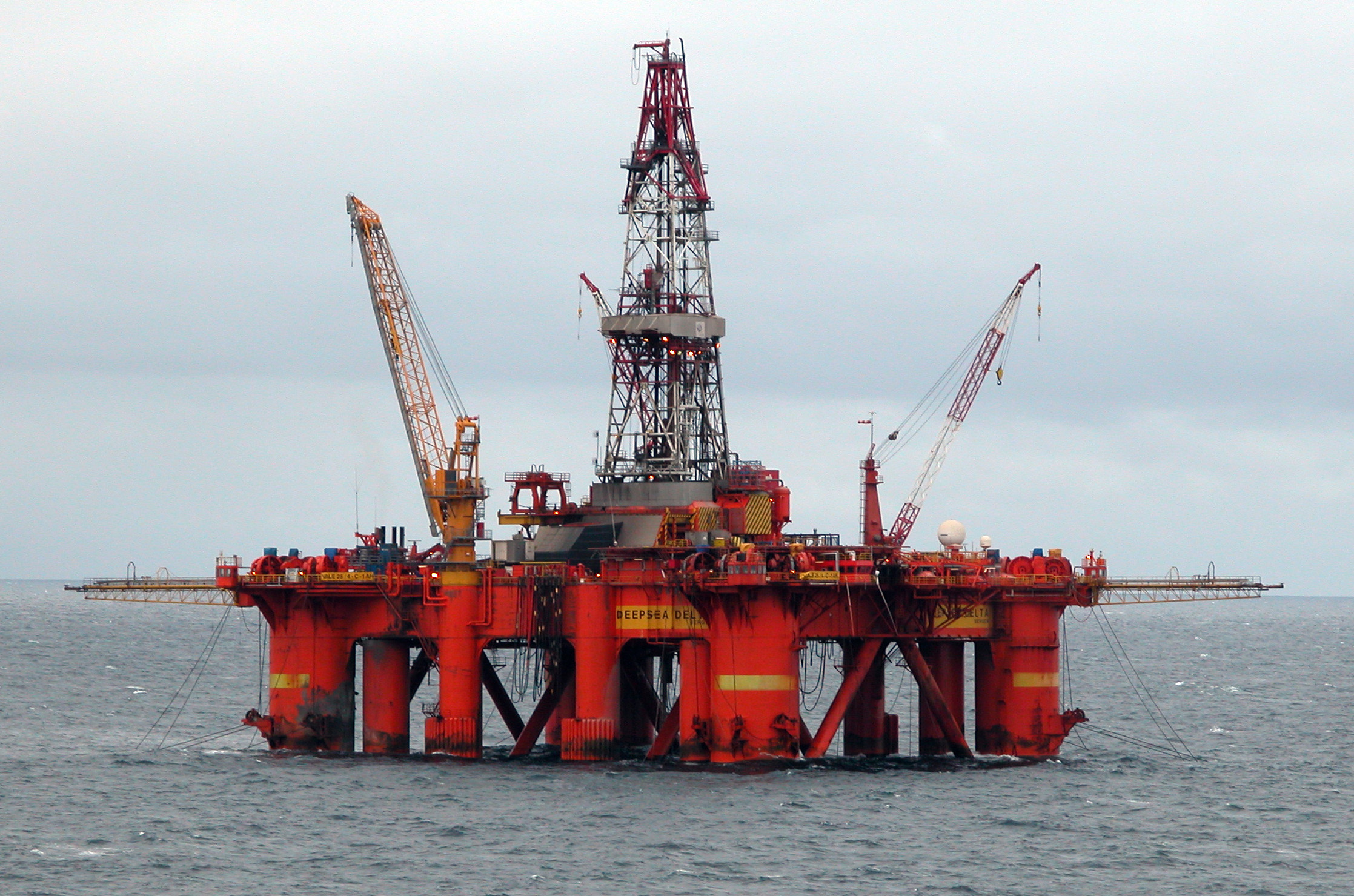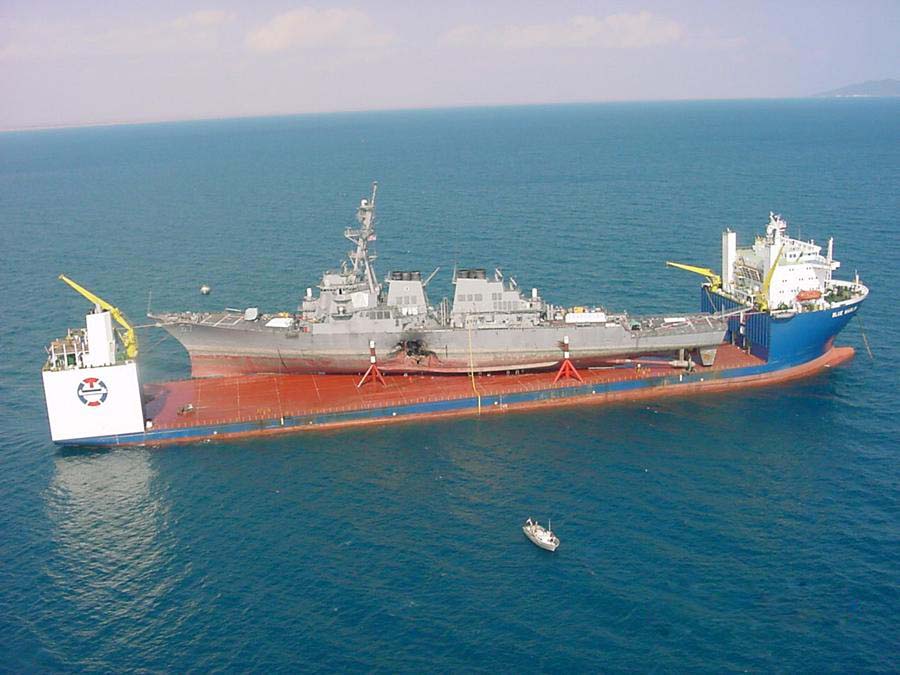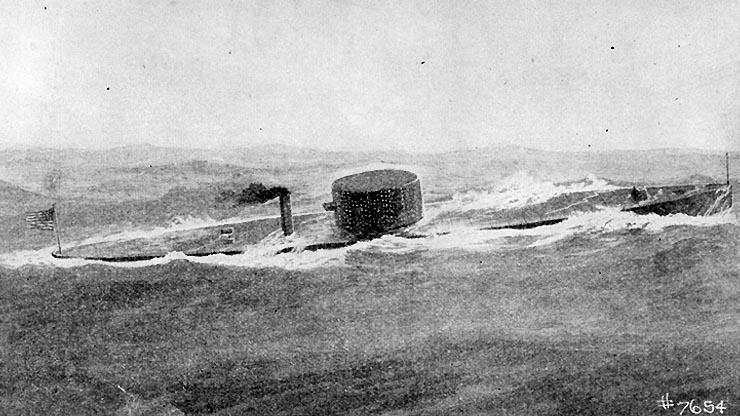|
Semi-submersibles
Semi-submersible may refer to a self-propelled vessel, such as: *Heavy-lift ship, which partially submerge to allow their cargo (another ship) to float into place for transport *Narco-submarine, some of which remained partially on the surface *Semi-submarine, which cannot fully submerge *Semi-submersible naval vessel, which partially submerges to minimize being observed *Semi-submersible platform, which is typically transported to a location where it is placed in service *Oil platform An oil platform (or oil rig, offshore platform, oil production platform, and similar terms) is a large structure with facilities to extract and process petroleum and natural gas that lie in rock formations beneath the seabed. Many oil platfor ..., a large structure with facilities for well drilling to explore, extract, store, and process petroleum and natural gas, in deeper water (more than 1,500 metres (4,900 ft)), the semisubmersibles or drillships are maintained at the required drilling loc ... [...More Info...] [...Related Items...] OR: [Wikipedia] [Google] [Baidu] |
Semi-submersible Platform
A semi-submersible platform is a specialised marine vessel used in offshore roles including as offshore drilling rigs, safety vessels, oil production platforms, and heavy lift cranes. They have good ship stability and seakeeping, better than drillships. Characteristics Offshore drilling in water depth greater than around 520 meters requires that operations be carried out from a floating vessel, since fixed structures are not practical. Initially in the early 1950s monohull ships such as CUSS I were used, but these were found to have significant heave, pitch and yaw motions in large waves, and the industry needed more stable drilling platforms. A semi-submersible obtains most of its buoyancy from ballasted, watertight pontoons located below the ocean surface and wave action. Structural columns connect the pontoons and operating deck. The operating deck can be located high above the sea level owing to the good ship stability of the design, and therefore is kept well away from th ... [...More Info...] [...Related Items...] OR: [Wikipedia] [Google] [Baidu] |
Oil Platform
An oil platform (or oil rig, offshore platform, oil production platform, and similar terms) is a large structure with facilities to extract and process petroleum and natural gas that lie in rock formations beneath the seabed. Many oil platforms will also have facilities to accommodate the workers, although it is also common to have a separate accommodation platform bridge linked to the production platform. Most commonly, oil platforms engage in activities on the continental shelf, though they can also be used in lakes, inshore waters, and inland seas. Depending on the circumstances, the platform may be fixed Platform, fixed to the ocean floor, consist of an artificial island, or floating oil production system, float. In some arrangements the main facility may have storage facilities for the processed oil. Remote subsea wells may also be connected to a platform by flow lines and by umbilical cable, umbilical connections. These sub-sea facilities may include of one or more subsea ... [...More Info...] [...Related Items...] OR: [Wikipedia] [Google] [Baidu] |
Heavy-lift Ship
A heavy-lift ship is a vessel designed to move very large loads that cannot be handled by normal ships. They are of two types: *''Semi-submersible'' ships that take on water ballast to allow the load—usually another vessel—to be floated over the deck, whereupon the ballast is jettisoned and the ship's deck and cargo raised above the waterline. *''Project cargo'' ships that use at least one heavy-lift crane for handling heavy cargo and sufficient ballast to assure stability and sea-keeping properties. Description There are several types of heavy-lift ships: Semi-submersible ships Semi-submersible heavy-lift ships have a long and low well deck between a forward pilot house and an aft machinery space. In superficial appearance, it is somewhat similar to a dry bulk carrier or some forms of oil tanker. Its ballast tanks can be flooded to lower the well deck below the water's surface, allowing oil platforms, other vessels, or other floating cargo to be moved into position f ... [...More Info...] [...Related Items...] OR: [Wikipedia] [Google] [Baidu] |
Narco-submarine
A narco-submarine (also called a drug sub or narco sub) is a type of custom ocean-going self-propelled typically semi-submersible (sometimes fully- submersible) vessel built for smugglers. Newer submarines are 'nearly-fully' submersible to be difficult to detect visually, by radar, sonar, or infrared systems. Cargos are typically several tons. In 2015, the largest-known cargo of was seized on a semi-submersible. The capabilities of these craft are increasing (some are capable of crossing the Atlantic Ocean); their operating places and circles are widening; and their numbers are growing. The drug trafficker Laureano Oubiña affirms the existence of a marine cemetery of narco-submarines near the Canary Islands (Spain). History During the 1980s, go-fast boats were the smuggling vessel of choice in many parts of the world, although these vessels could be detected by radar. As radar coverage improved, smugglers developed semi-submersibles to avoid radar detection. In 1988, a ... [...More Info...] [...Related Items...] OR: [Wikipedia] [Google] [Baidu] |
Semi-submarine
{{unreferenced, date=September 2015 A semi-submarine (semi-sub) is a surface vessel that is not capable of diving, but has accommodation space below the waterline featuring underwater windows. The watercraft is similar to glass-bottom boats, but with deeper draft. Both types of boats are mainly used to provide sight-seeing trips for tourists in clear, calm, and often shallow, waters. Design The most common design is similar to a small ship. The passenger cabin is deep within the hull, a few meters below the waterline. The cabin is equipped with large underwater windows, so the passengers can observe the marine environment that is passed during the voyage. There are significant engineering differences between a true submarine and a semi-submarine. Submarines are human-occupied pressure vessels subjected to high external pressure, while semi-submarines are only subjected to the same pressures as other surface vessels of similar draft operating in similar conditions. As the hydro ... [...More Info...] [...Related Items...] OR: [Wikipedia] [Google] [Baidu] |
Semi-submersible Naval Vessel
A semi-submersible naval vessel is a hybrid warship, that combines the properties of a surface ship and submarine by using water ballast to partially immerse and minimize its above-waterline profile, thereby improving its stealth characteristics when in hostile waters. The was an antecedent to such craft with its low-profile deck and gun turret. Russian and North Korean semi-submersible naval vessels evolved from torpedo boats and special forces boats that could partially submerge (sometimes to snorkel depth) to perform their missions. The US Navy SEALs use such vessels for clandestine special forces actions. Efforts to embody advantageous surface-ship characteristics into submarines have not been widely adopted. Antecedent USS ''Monitor'' was an iron-hulled, steam-powered warship—built during the American Civil War—as the first ironclad warship commissioned by the Union Navy. The ''Monitor'' is noted for its role in the Battle of Hampton Roads in 1862, when it fought indeci ... [...More Info...] [...Related Items...] OR: [Wikipedia] [Google] [Baidu] |
Boat Types
A boat is a watercraft of a large range of types and sizes, but generally smaller than a ship, which is distinguished by its larger size, shape, cargo or passenger capacity, or its ability to carry boats. Small boats are typically found on inland waterways such as rivers and lakes, or in protected coastal areas. However, some boats, such as the whaleboat, were intended for use in an offshore environment. In modern naval terms, a boat is a vessel small enough to be carried aboard a ship. Boats vary in proportion and construction methods with their intended purpose, available materials, or local traditions. Canoes have been used since prehistoric times and remain in use throughout the world for transportation, fishing, and sport. Fishing boats vary widely in style partly to match local conditions. Pleasure craft used in recreational boating include ski boats, pontoon boats, and sailboats. House boats may be used for vacationing or long-term residence. Lighters are use ... [...More Info...] [...Related Items...] OR: [Wikipedia] [Google] [Baidu] |
Nautical Terminology
This glossary of nautical terms is an alphabetical listing of terms and expressions connected with ships, shipping, seamanship and navigation on water (mostly though not necessarily on the sea). Some remain current, while many date from the 17th to 19th centuries. The word nautical derives from the Latin ''nauticus'', from Greek ''nautikos'', from ''nautēs'': "sailor", from ''naus'': "ship". Further information on nautical terminology may also be found at Nautical metaphors in English, and additional military terms are listed in the Multiservice tactical brevity code article. Terms used in other fields associated with bodies of water can be found at Glossary of fishery terms, Glossary of underwater diving terminology, Glossary of rowing terms, and Glossary of meteorology. This glossary is split into two articles: * terms starting with the letters A to L are at Glossary of nautical terms (A-L) * terms starting with the letters M to Z are at Glossary of nautical terms (M-Z) ... [...More Info...] [...Related Items...] OR: [Wikipedia] [Google] [Baidu] |

.jpg)



.png)